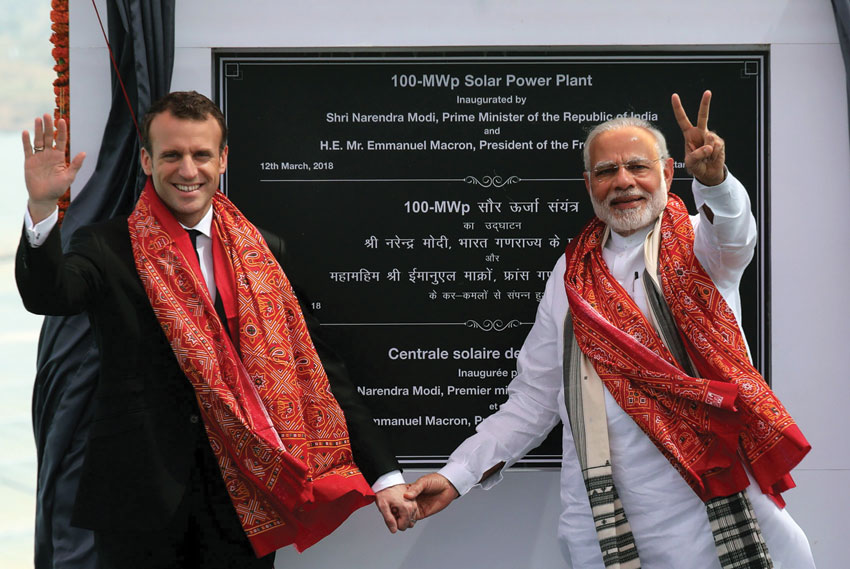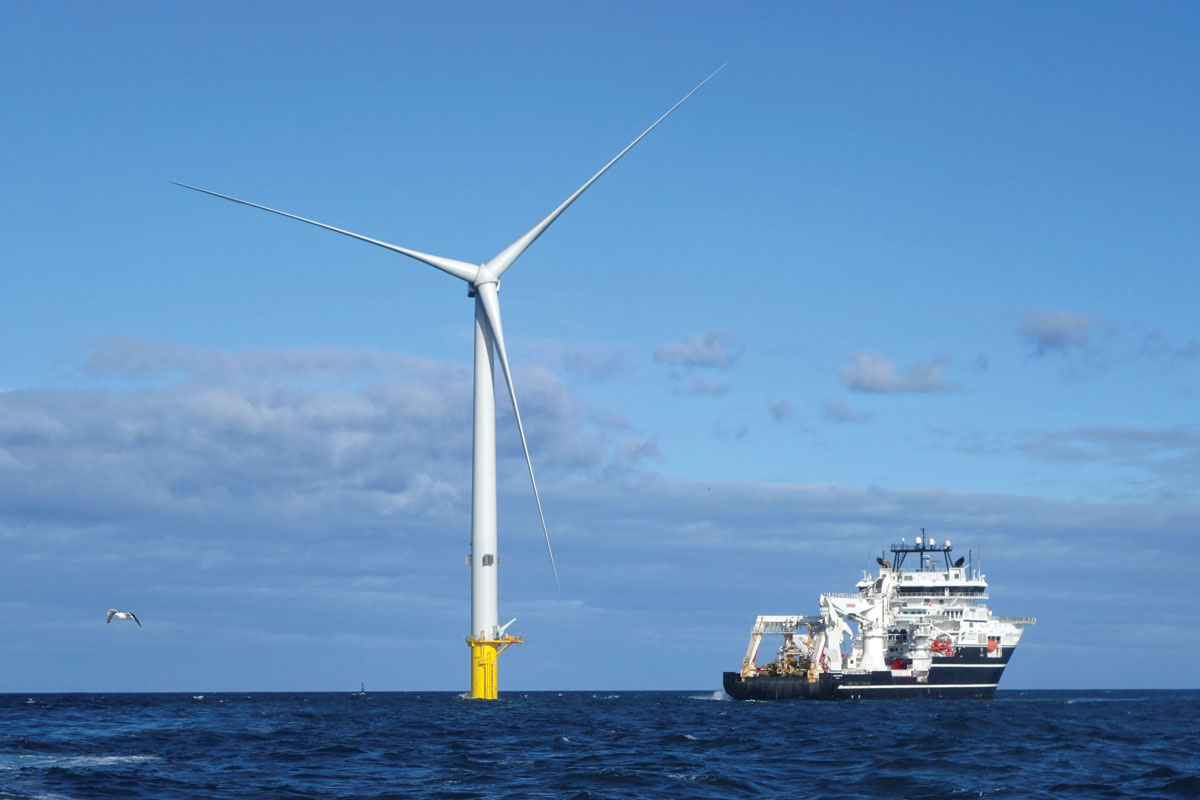India Thinks “Out of the Box” on Renewable Energy
Turbines like these at The Blyth Offshore Demonstrator Wind Farm seen off the coast of Blyth, north of Newcastle-upon-Tyne, in northeast England, Oct. 5, 2017, are the new focus of Modi government in their quest for renewable energy. (William Edwards/AFP/Getty Images)
Though there may be varied opinions about the performance of Prime Minister Narendra Modi, the one legacy where there is likely to be agreement is pushing forward India’s renewable energy agenda. Over the past couple of years, India has done quite well to emerge as a global leader in creation of renewable capacity, writes Siddharth Srivastava.
India has made good progress towards its stated aim of 175,000 MW renewables by 2022 that will comprise 100,000 MW solar and 60,000 MW wind energy. India is close to achieving 20 GW grid connected installed solar power capacity this fiscal itself, as per official data. Total renewable capacity is 62.8 GW.
Continuing with New Delhi’s out-of-the-box approach to alternate energy, a senior official at the ministry of new and renewable energy (MNRE) said recently that the country’s India’s first offshore wind project will be set up at Arichamunai near Dhanushkodi in Tamil Nadu at an investment of Rs. 3 billion. “We are exploring the possibility of installing offshore wind turbines in this region as we find this site best as far as the wind quality and speed are concerned,” Bhanu Pratap Yadav, joint secretary, MNRE, said after inspecting the site at Arichamunai, located on the eastern tip of Rameswaram Island that draws Hindu pilgrims in large numbers.
India’s offshore wind energy potential has been spoken about for a while now, given the vast 7,600-kilometer coastline. It was in October 2015 that the Indian government approved a policy for offshore wind for the first time. New Delhi said as per initial estimates the Gujarat coastline in the west has potential to generate over 100,000 MW of offshore wind energy and Tamil Nadu 60,000 MW. However, as matters have played out since, MNRE has understandably focused on onshore wind projects, lately overseeing the paradigm change from feed-in-tariffs to price discovery via open auctions. The thinking has been that technology for onshore projects is proven and cost-effective while offshore segment is still a work in progress.
Growth has been steady. India’s largest and third open auction of wind power projects of 2000 MW that was overseen by MNRE successfully concluded in February. Overall India’s onshore wind power generation capacity is 32.8 GW as per latest Central Electricity Authority (CEA) data. Over the recent past, however, there are indications MNRE is giving offshore wind projects more thought. In December, MNRE announced plans to auction 5 GW offshore wind power capacities in 2018. The bidding will be the first in India for such projects.
Offshore Versus Onshore
There is an emerging view for some time now that project sites for onshore wind power plants are heading towards saturation point. Prime locations with high generation potential have already been acquired and demarcated by developers. Hence, large scale expansions of wind energy capacity in India will only be possible by tapping the offshore options. Cost will be an important factor in determining investment flows. Typically, capital expenditure for setting up offshore wind energy projects can be 2.5 times higher than the onshore alternative. However, given the relatively nascent technology of offshore wind, generation costs are expected to dip.
Higher Plant Load Factor (PLF) of offshore projects can also be a big compensatory factor. Offshore projects can also be much bigger in scale and can range from 1000 MW to 2000 MW. This is because developers do not need to worry about expensive and politically sensitive land acquisition process as all maritime rights including in coastal areas are a natural resource that belong to the government. This is especially important in India given very high population density, rapid urbanization and suspicions about acquiring agricultural land by fooling farmers.

In Conclusion
India, that is endowed with immense natural resources, will need to incorporate new technologies and ideas such as biofuels, geothermal, offshore wind, ocean wave energy to retain its leadership position in renewables. The government will need to handhold the offshore wind sector by extending subsidies and other fiscal incentives. The doles can be gradually withdrawn once the offshore wind generators are able to stand on their feet and effectively compete with other sources of power, including thermal. This is the way the solar and onshore wind sectors have been handled, with both sources now able to produce electricity at grid parity rates. New Delhi will also need to cater to specific needs of offshore wind such as quick single window clearances from multiple authorities such as Navy, security agencies, home ministry and coast guard.
Proper mapping of locations with high potential is also important as there continues to be doubts about ideal natural conditions for offshore wind projects in India, especially along the steep shoreline of the east coast that is rocky and prone to earthquake, floods, unpredictable tidal waves, even tsunami. This is unlike conditions in Europe, where offshore wind has done well. These include calm shallow seas and adequate wind velocity.


